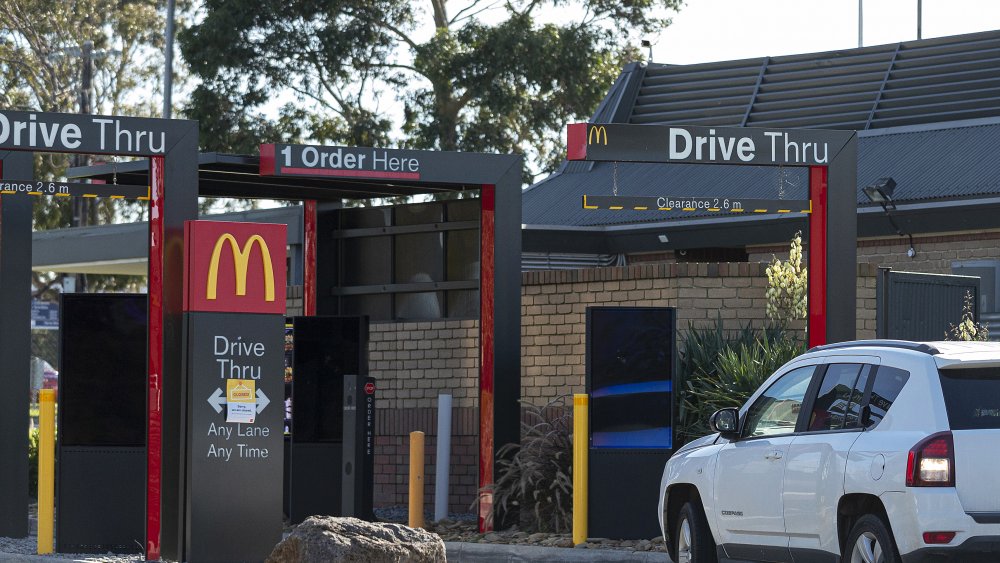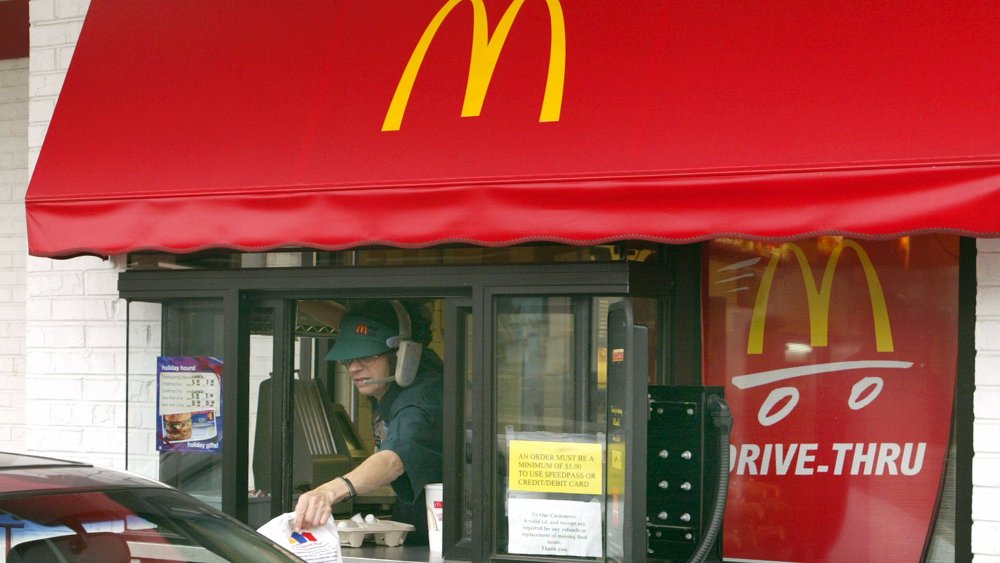What You Didn't Know About McDonald's First Drive-Thru
In 1974, a McDonald's manager based in Dallas, Texas set out to renovate an Oklahoma City restaurant. Outside the restaurant, he planned to install a four-column, garden-themed portico, which would be presided over by a full-sized Ronald McDonald statue. Ronald McDonald, in turn, was to be equipped with speakers that could be used to take customer's orders (via AZ Central). The first McDonald's drive-thru was supposed to be an elaborate affair, but in the end it was neither intricate (it was essentially just a hole in the wall) nor did it belong to the state of Oklahoma.
Have you heard that these days McDonald's drive-thrus are in the midst of a reinvention? In 2019 QSR reported that the fast-food giant was installing digital drive-thru menu displays capable of dynamically changing food suggestions according to time of day, weather, traffic, and most popular menu items. The investment will likely be worth it. As of 2020, McDonald's drive-thru orders racked in up to 70 percent of the fast-food chain's revenues (via The New York Times).
They surprising origin of the first McDonald drive-thru
McDonald's first drive-thru opened in January of 1975. It was a small, attendant-sized hole that AZ Central states restaurant manager David Rich cut into the wall of his McDonald's franchise in Sierra Vista, Arizona. It wasn't glamourous, it didn't need to be. Rich designed the sliding window to attract soldiers, not civilians. In 1974, Fort Huachuca's soldiers may well have spent time daydreaming about burgers and fries as they drove past Rich's McDonald's on their way to and from work. None of them stopped by the restaurant, as a standing order prevented soldiers from wearing their uniforms in public — meaning that they couldn't go into the restaurant to order food without changing into civilian clothes first. Confused? Prologue Magazine says that back at the turn of the century, Fort Huachuca's soldiers (who spent their days "chasing bandits and revolutionaries" across the US and Mexican border) were known to let loose in a nearby red-light district. While stopping at a McDonald's in uniform in the 1970s would hardly have raised eyebrows, given the base's past, we understand why the "no appearing in uniform in public" policy might have been initially put in place.
Regardless of the reasons behind the ban, Rich's plan worked. To this day, AZ Central states Sierra Vista's inhabitants remember the "lines of the soldiers" waiting to be served at McDonald's first ever drive-thru. When, later that spring, the much-anticipated Oklahoma City drive-thru opened, it rained money. Sales at that McDonald's restaurant rose by 40 percent in just two months.

